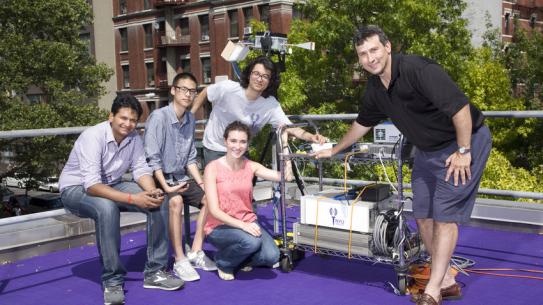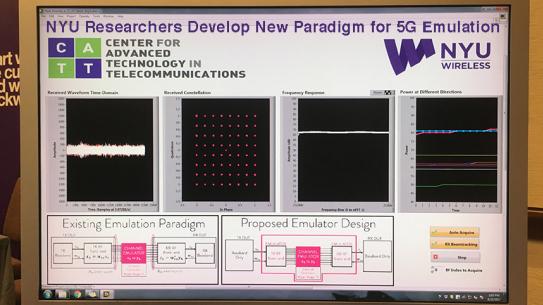
Dr. Rangan received the B.A.Sc. at the University of Waterloo, Canada and the M.Sc. and Ph.D. at the University of California, Berkeley, all in Electrical Engineering. He has held postdoctoral appointments at the University of Michigan, Ann Arbor and Bell Labs. In 2000, he co-founded (with four others) Flarion Technologies, a spin-off of Bell Labs, that developed Flash OFDM, the first cellular OFDM data system and pre-cursor to 4G cellular systems including LTE and WiMAX. In 2006, Flarion was acquired by Qualcomm Technologies. Dr. Rangan was a Director of Engineering at Qualcomm involved in OFDM infrastructure products. He joined the ECE department at NYU Tandon (formerly NYU Polytechnic) in 2010. He is a Fellow of the IEEE and the Associate Director of NYU WIRELESS, an industry-academic research center on next-generation wireless systems.
Education
University of Waterloo, Waterloo, Canada, 1992
Bachelors of Applied Science, Electrical Engineering
University of California, Berkeley, 1995
Master of Science, Electrical Engineering
University of California, Berkeley, 1997
Doctor of Philosophy, Electrical Engineering
Experience
Flarion Technologies
Co-founder and Director of Engineering
From: March 2000 to January 2006
Qualcomm Technologies
Director of Engineering
From: January 2006 to February 2010
Research News
Enabling Remote Whole-Body Control with 5G Edge Computing
Huaijiang Zhu, a Ph.D. student in electrical and computer engineering was lead author.
There are many real-world — and, someday, off-world — applications for light-weight, energy-efficient, fully autonomous robots. Yet the more autonomous a robot is, the greater its computational requirements. Onboarding the components to handle this computational function adds weight, cost and reduces potential for applications in hostile environments.
It might thus be desirable to offload intensive computation--not only sensing and planning, but also low-level whole-body control--to remote servers in order to reduce on-board computational needs. Fifth Generation (5G) wireless cellular technology, with its low latency and high bandwidth capabilities, has the potential to unlock cloud-based high performance control of complex robots. However, state-of-the-art control algorithms for legged robots can only tolerate very low control delays, which even ultra-low latency 5G edge computing can sometimes fail to achieve.
In this work, the investigators, led by Ludovic Righetti, associate professor of electrical and computer engineering and mechanical and aerospace engineering, and a member of NYU WIRELESS, investigate the problem of cloud-based whole-body control of legged robots over a 5G link. Their novel approach consists of a standard optimization-based controller on the network edge and a local linear, approximately optimal controller that significantly reduces on-board computational needs while increasing robustness to delay and possible loss of communication. Simulation experiments on humanoid balancing and walking tasks that includes a realistic 5G communication model demonstrate significant improvement of the reliability of robot locomotion under jitter and delays likely to experienced in 5G wireless links.
The team included Kai Pfeiffer, a postdoctoral researcher, and Manali Sharma, a master's student in the Department of Electrical and Computer Engineering; Sundeep Rangan, professor of electrical and computer engineering and associate director of NYU WIRELESS; and Marco Mezzavilla, a research scientist at NYU WIRELESS.
The project, funded in part by the National Science Foundation National Robotics Initiative and OPPO Mobile Telecommunications, will be presented at the IEEE/RSJ International Conference on Intelligent Robots and Systems in October, 2020.





